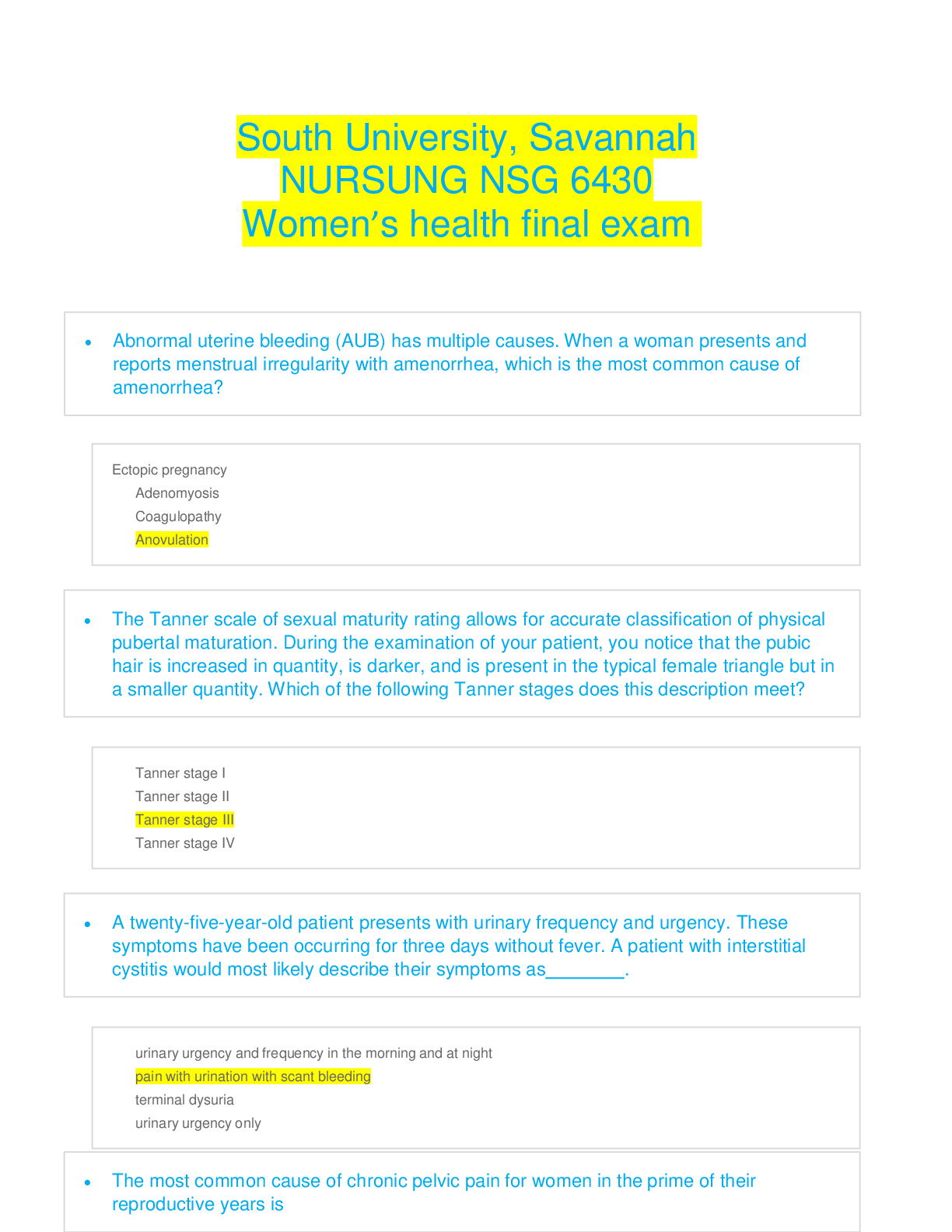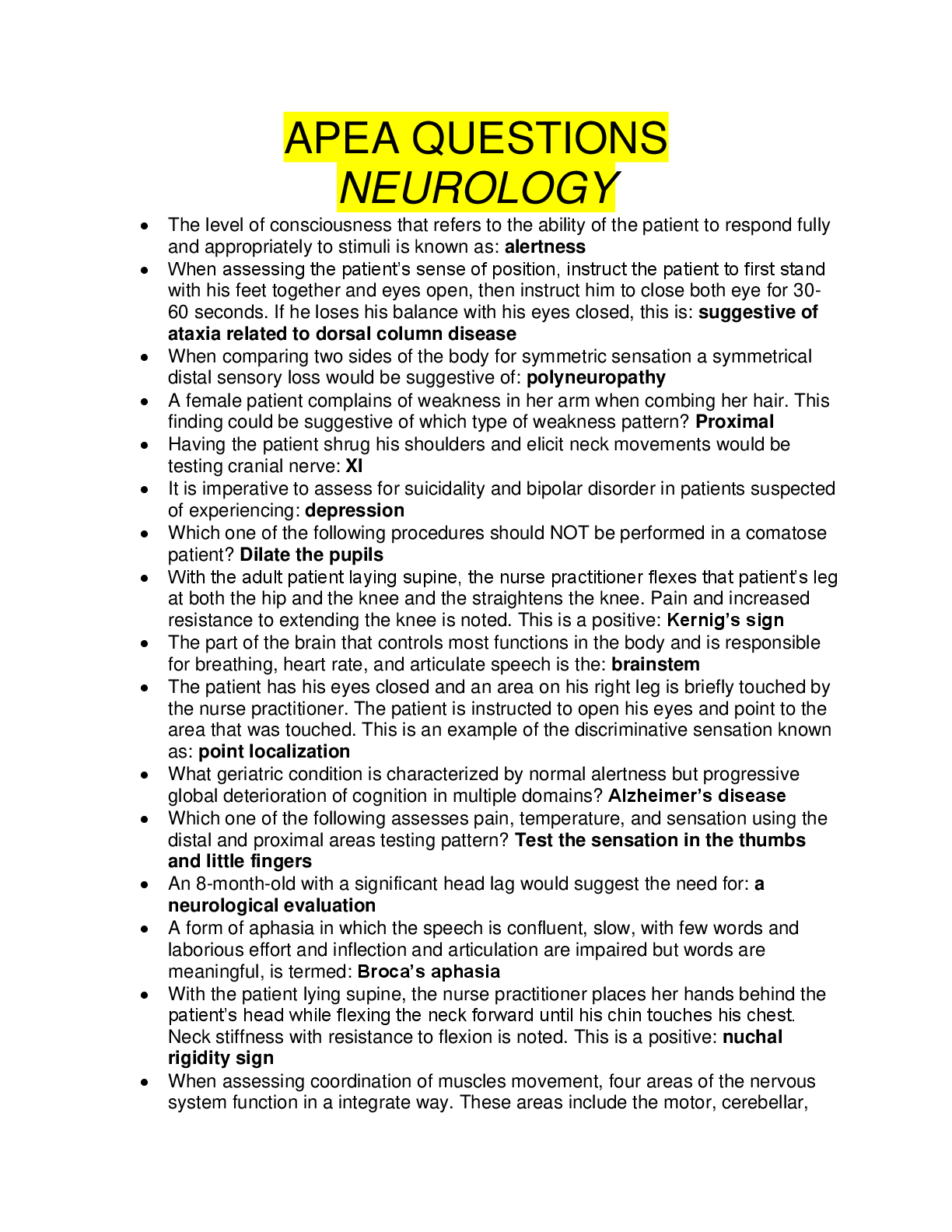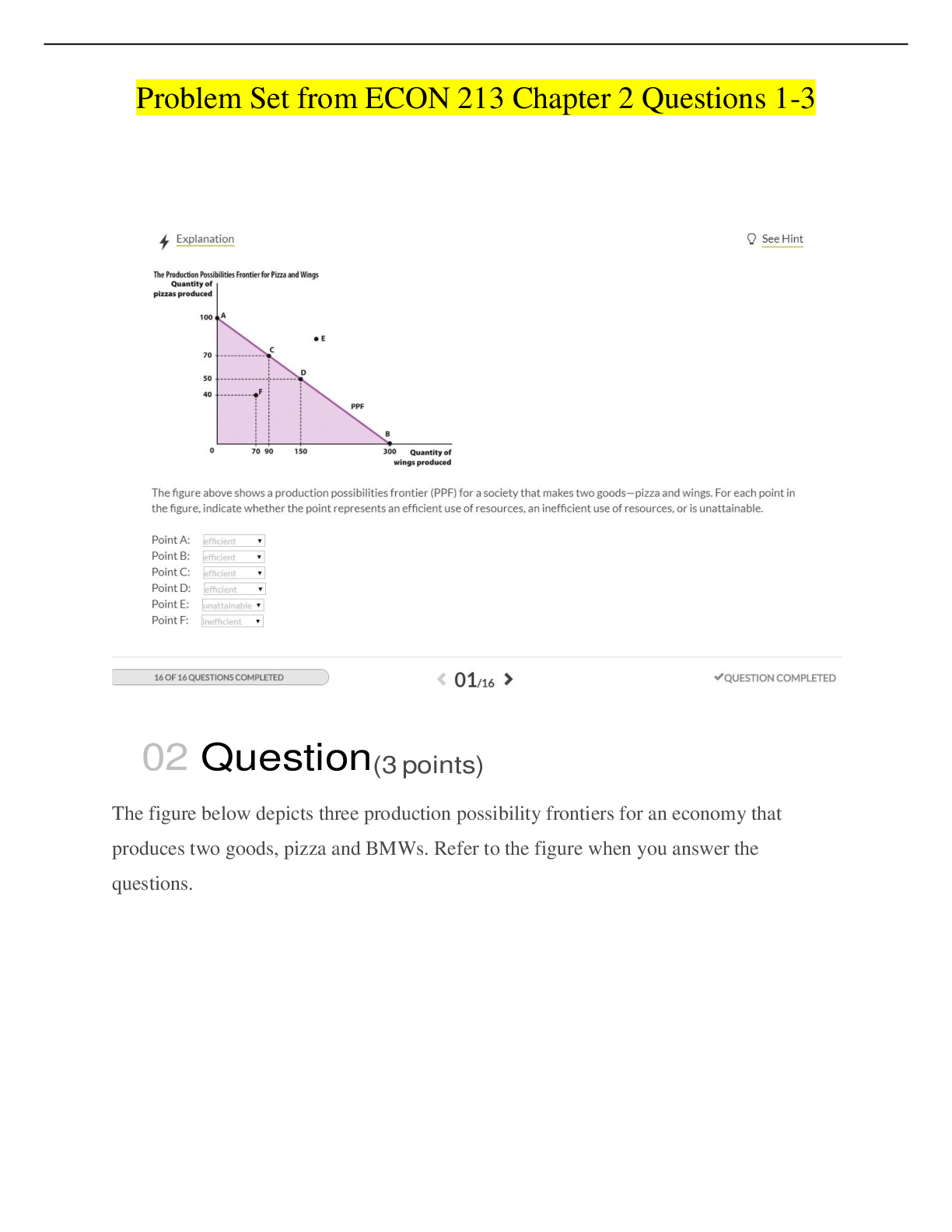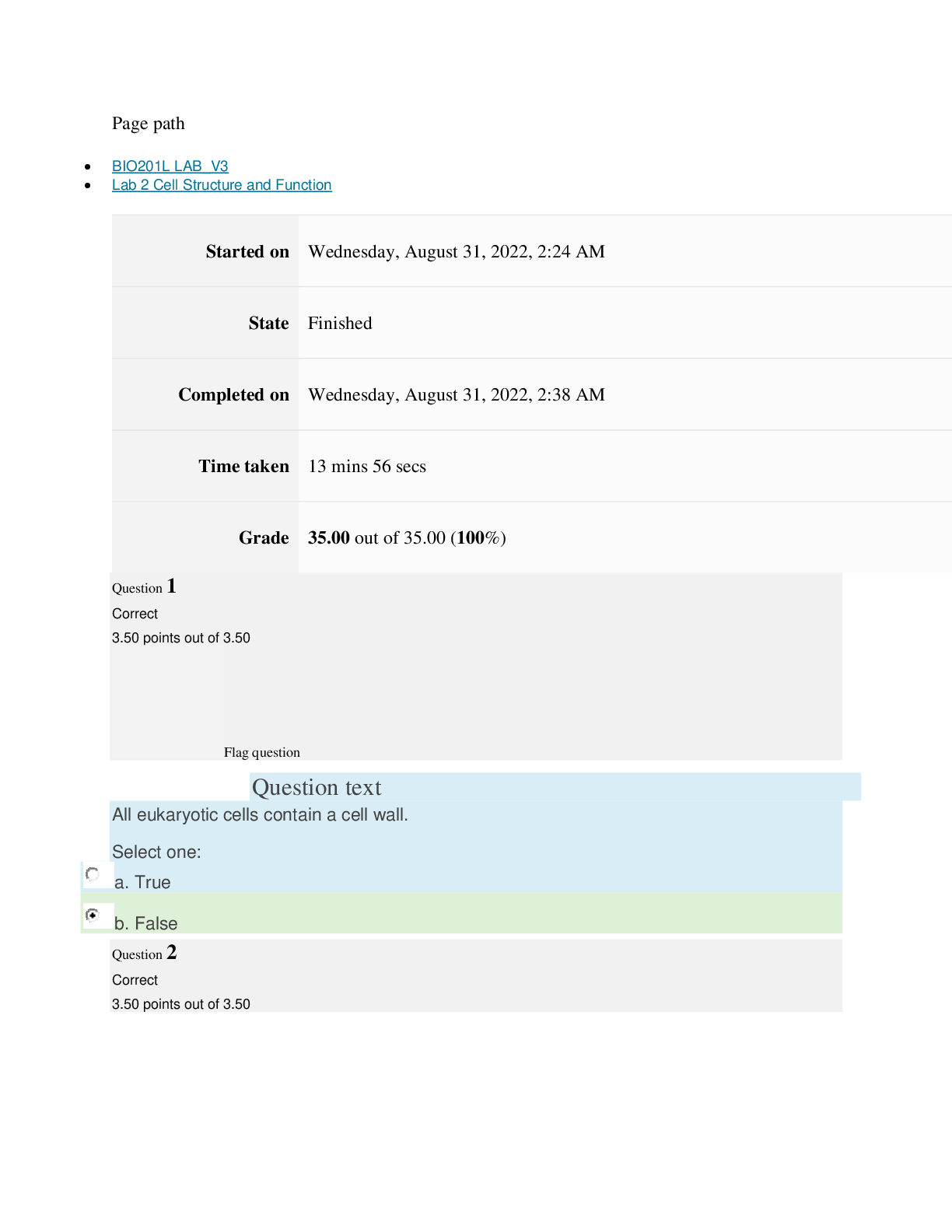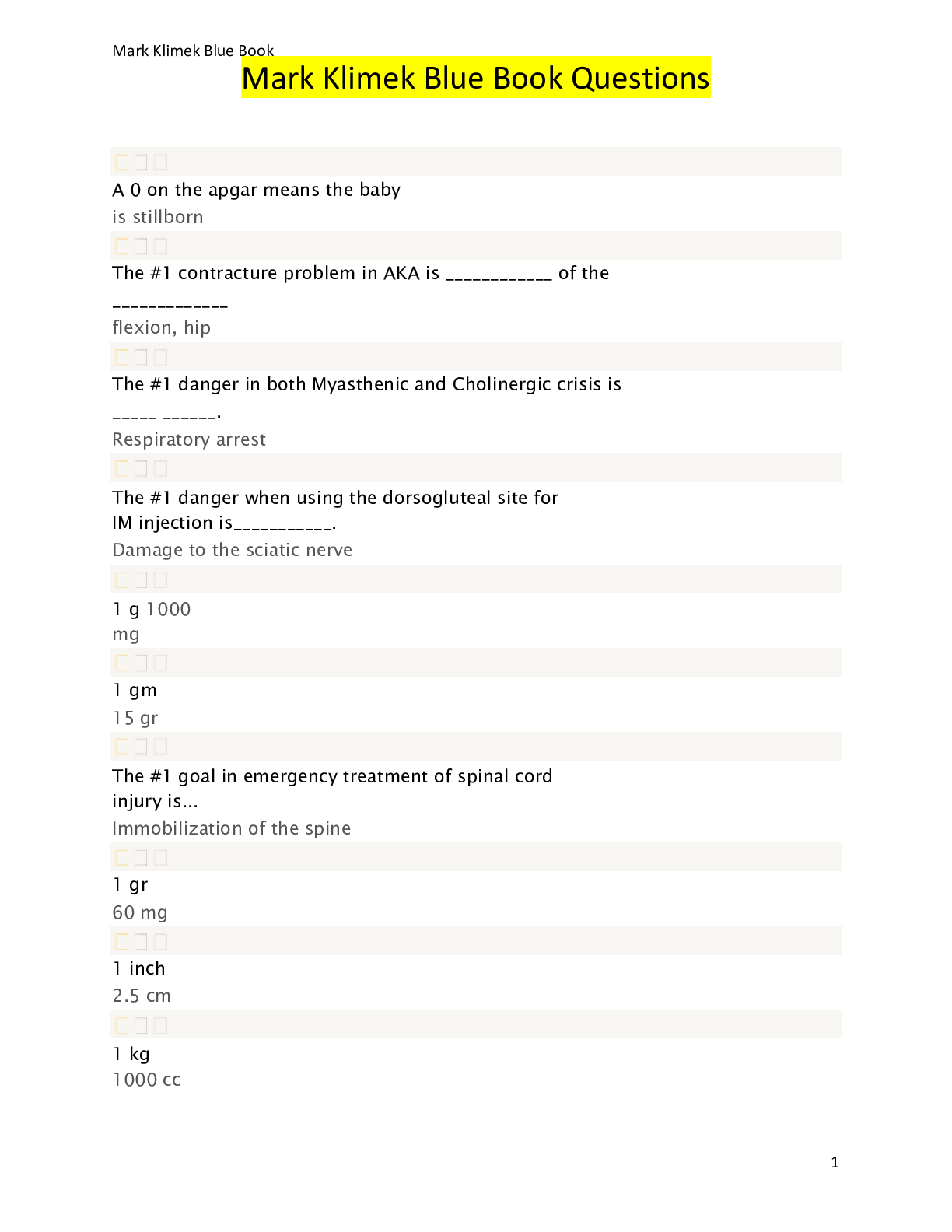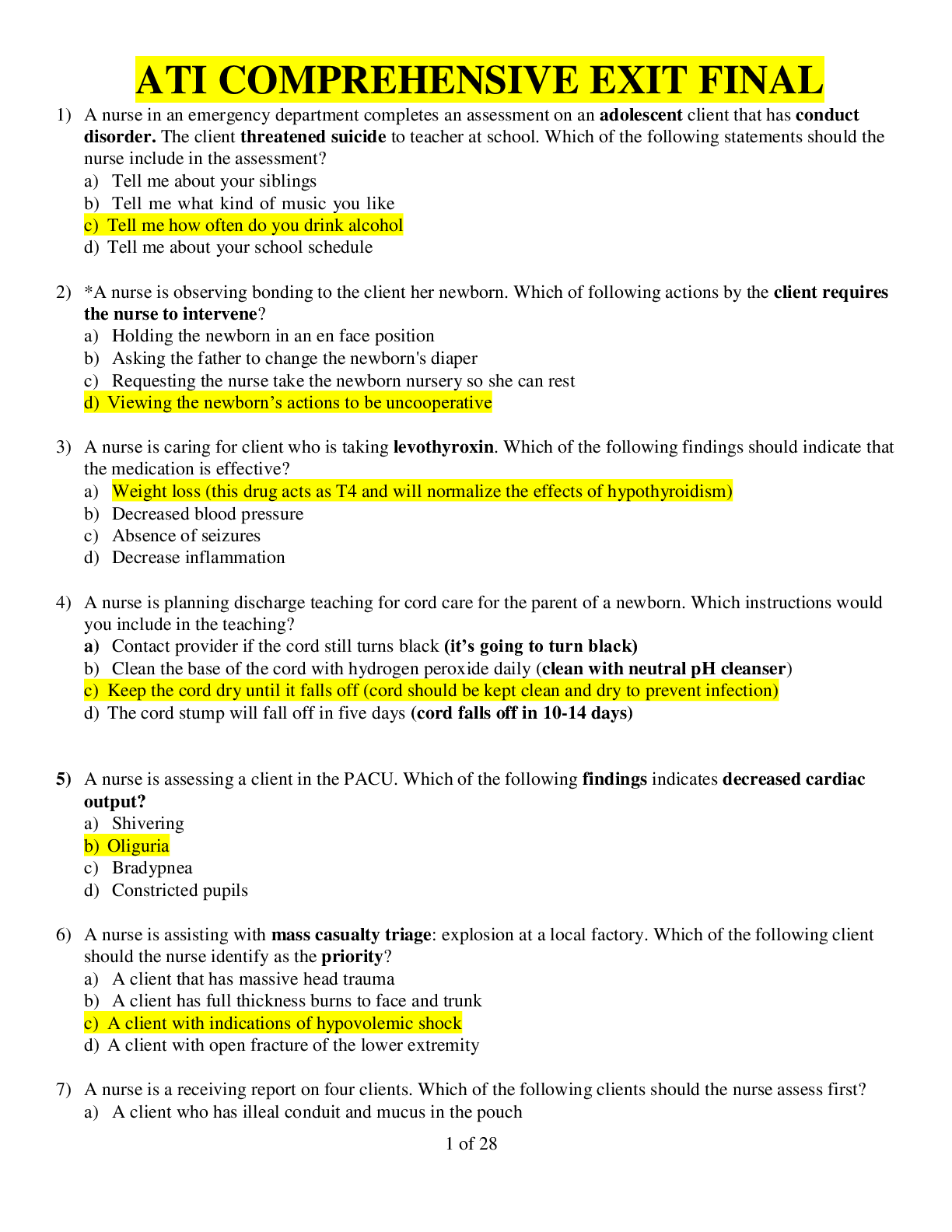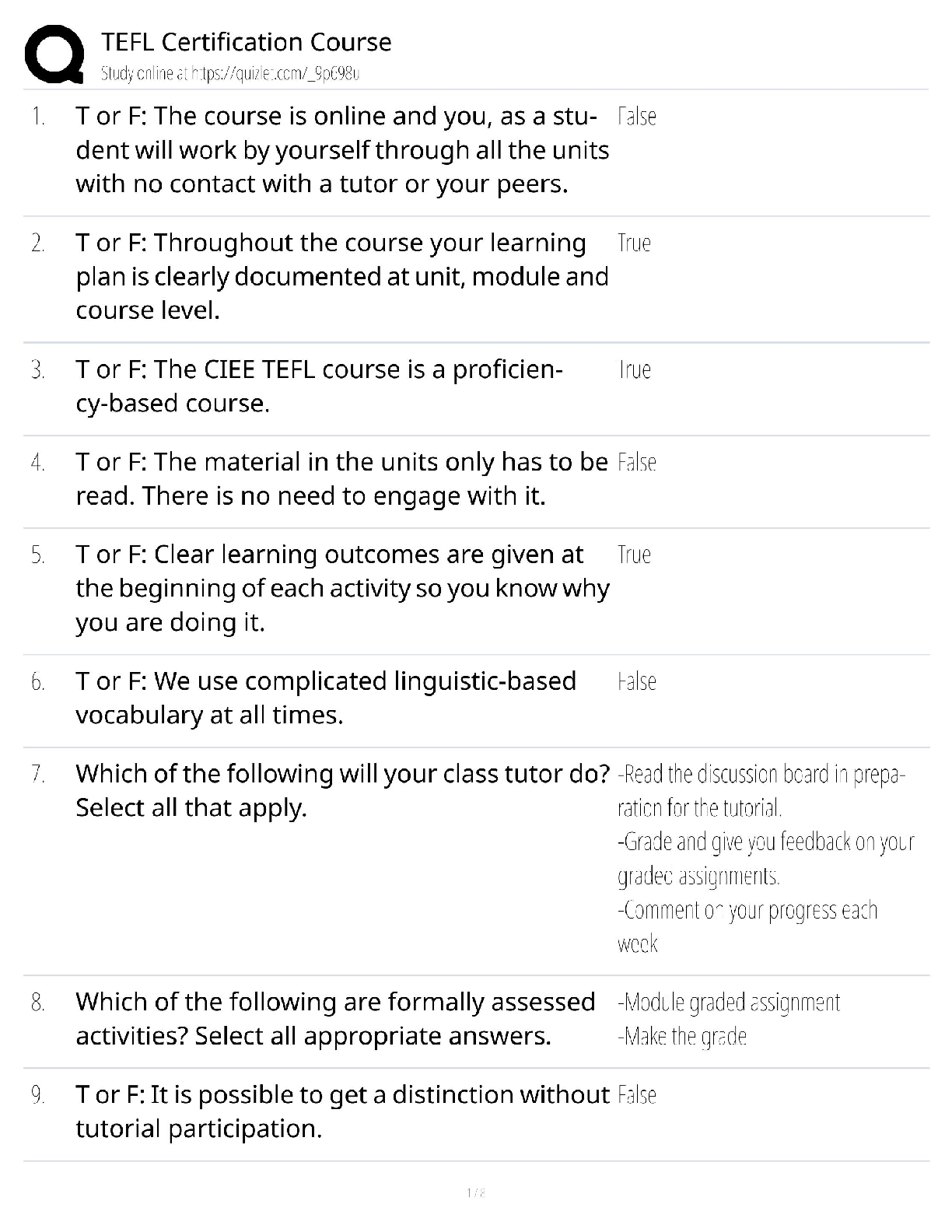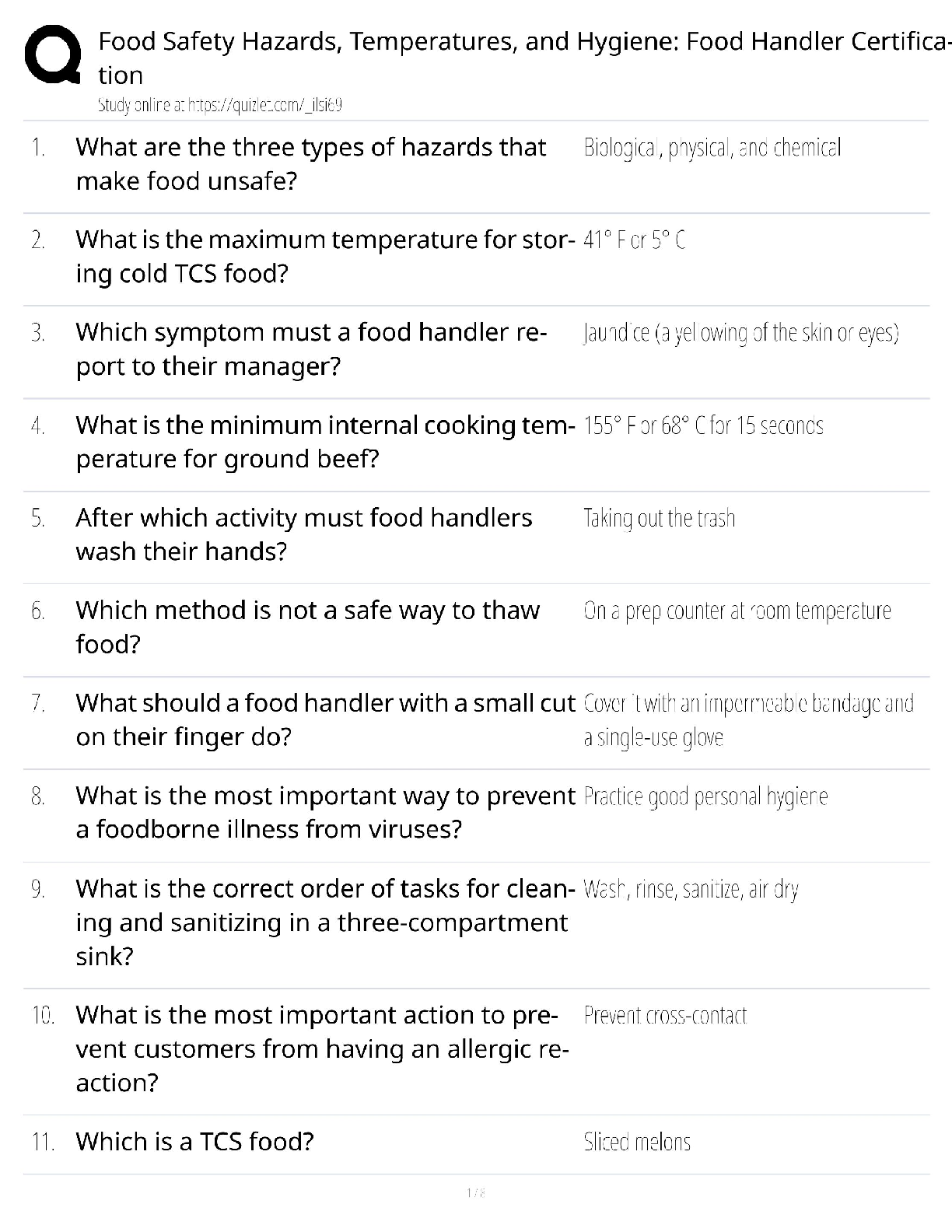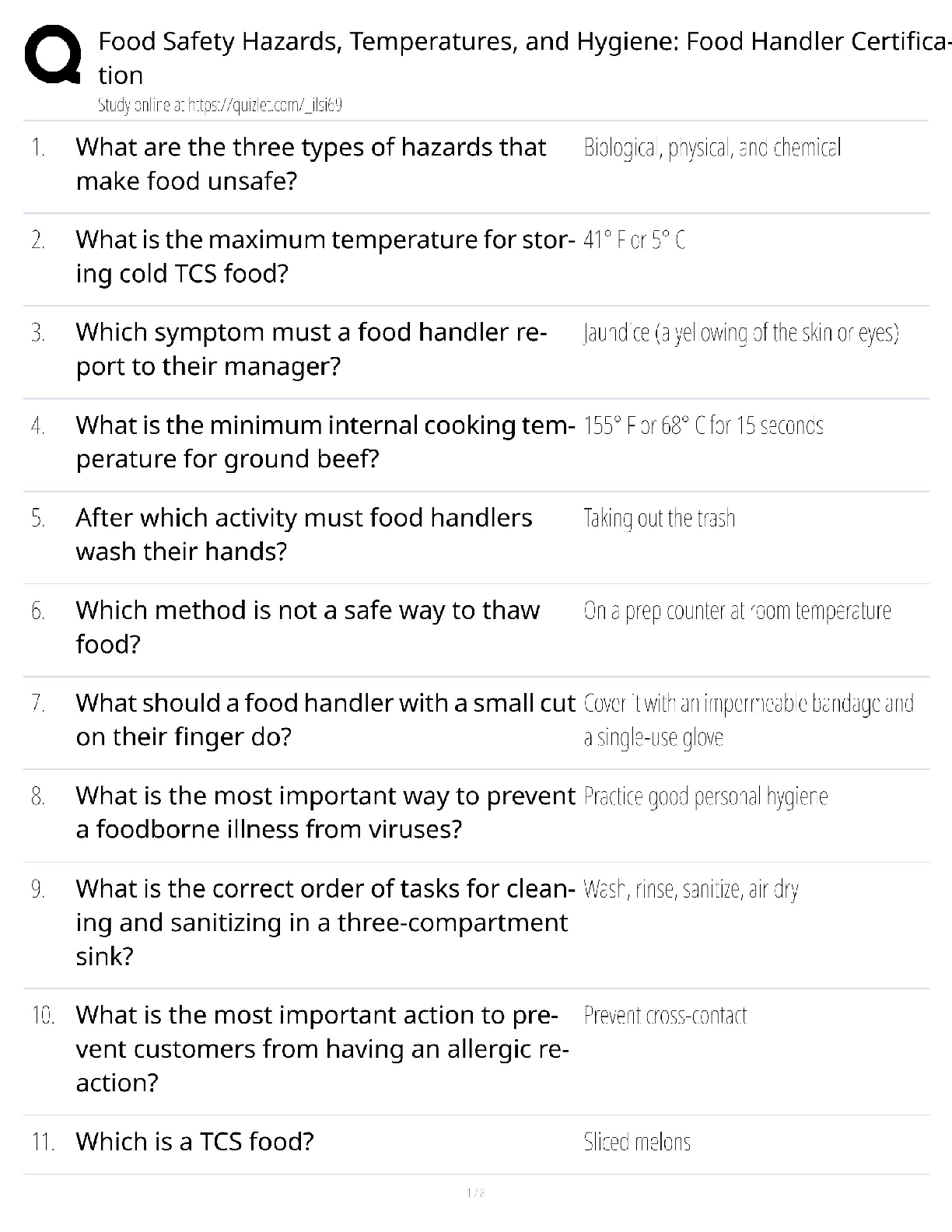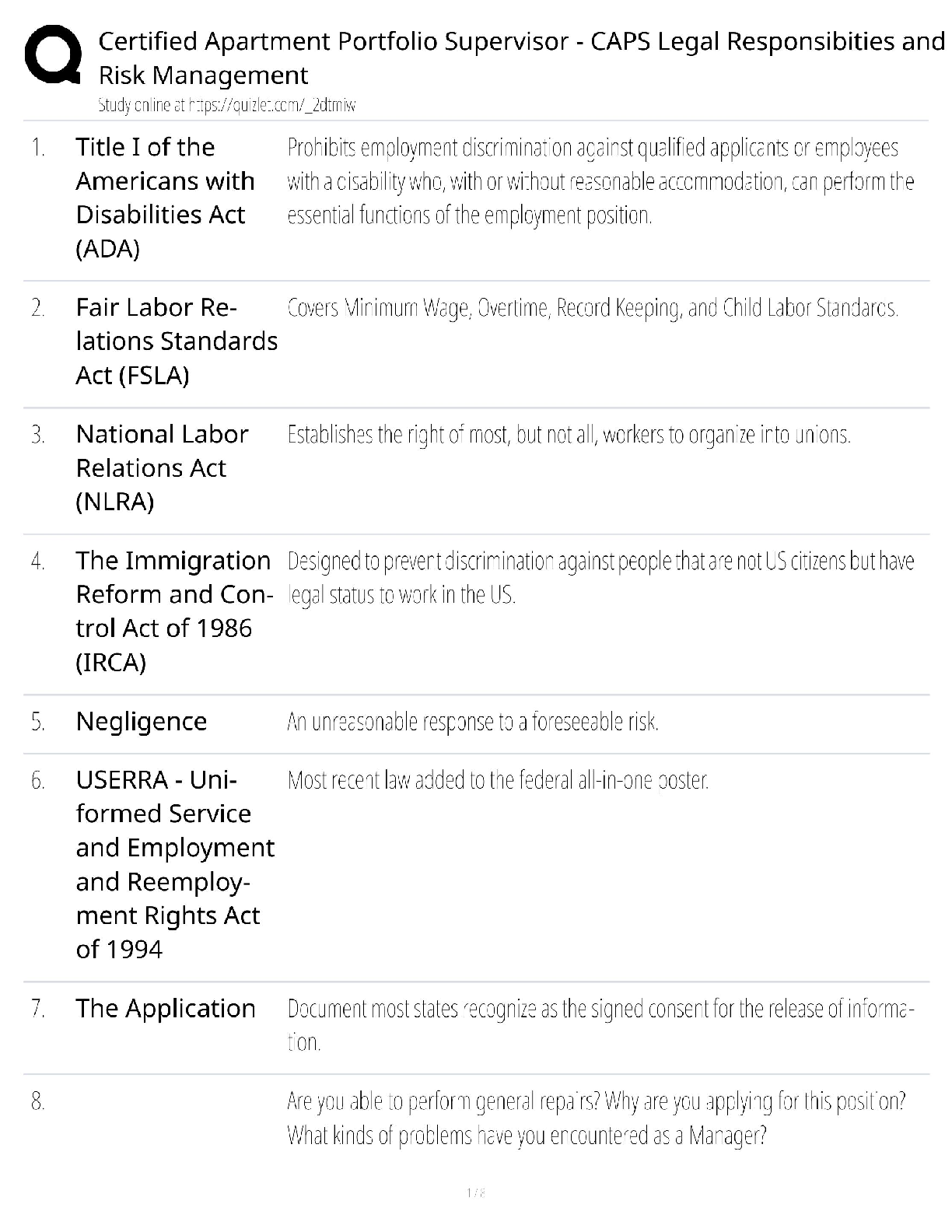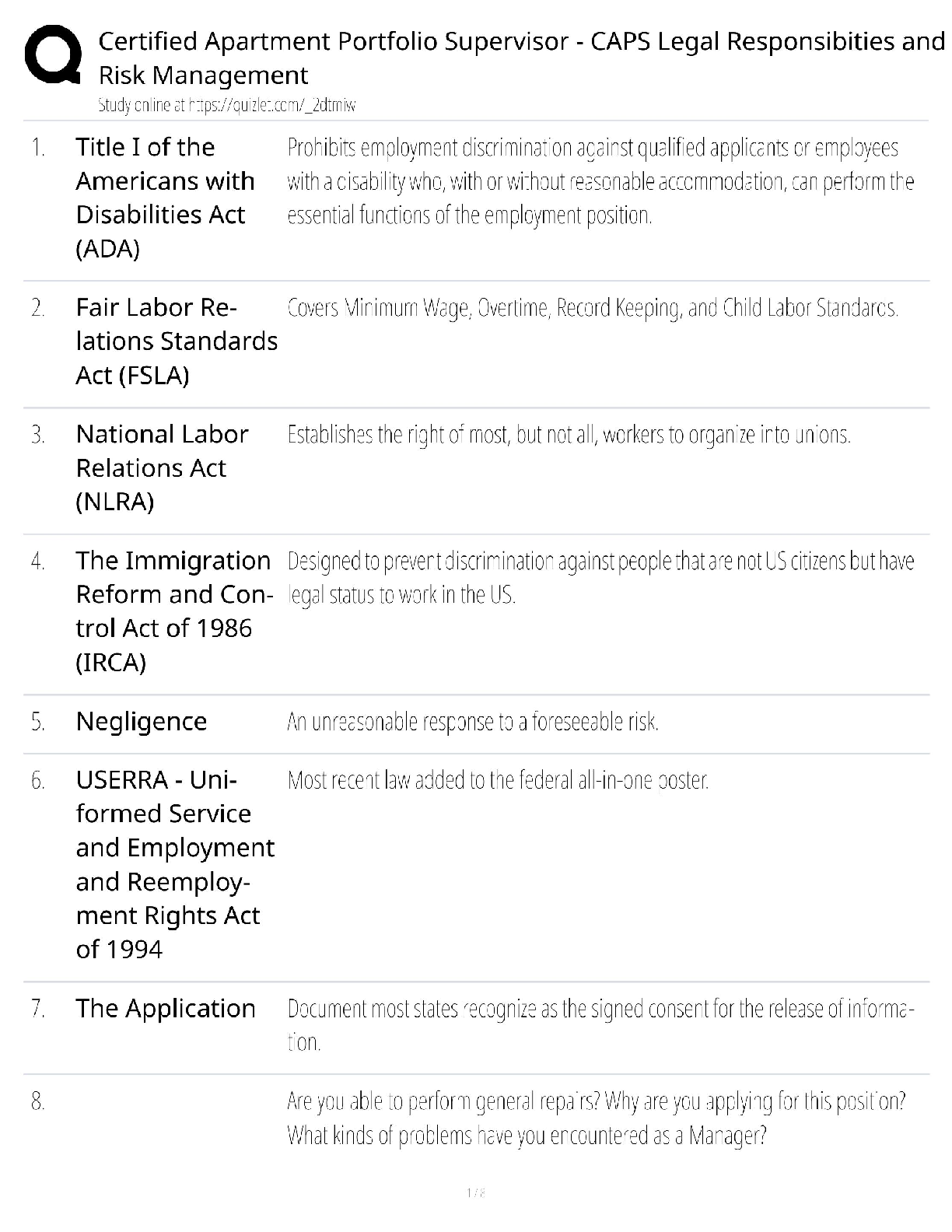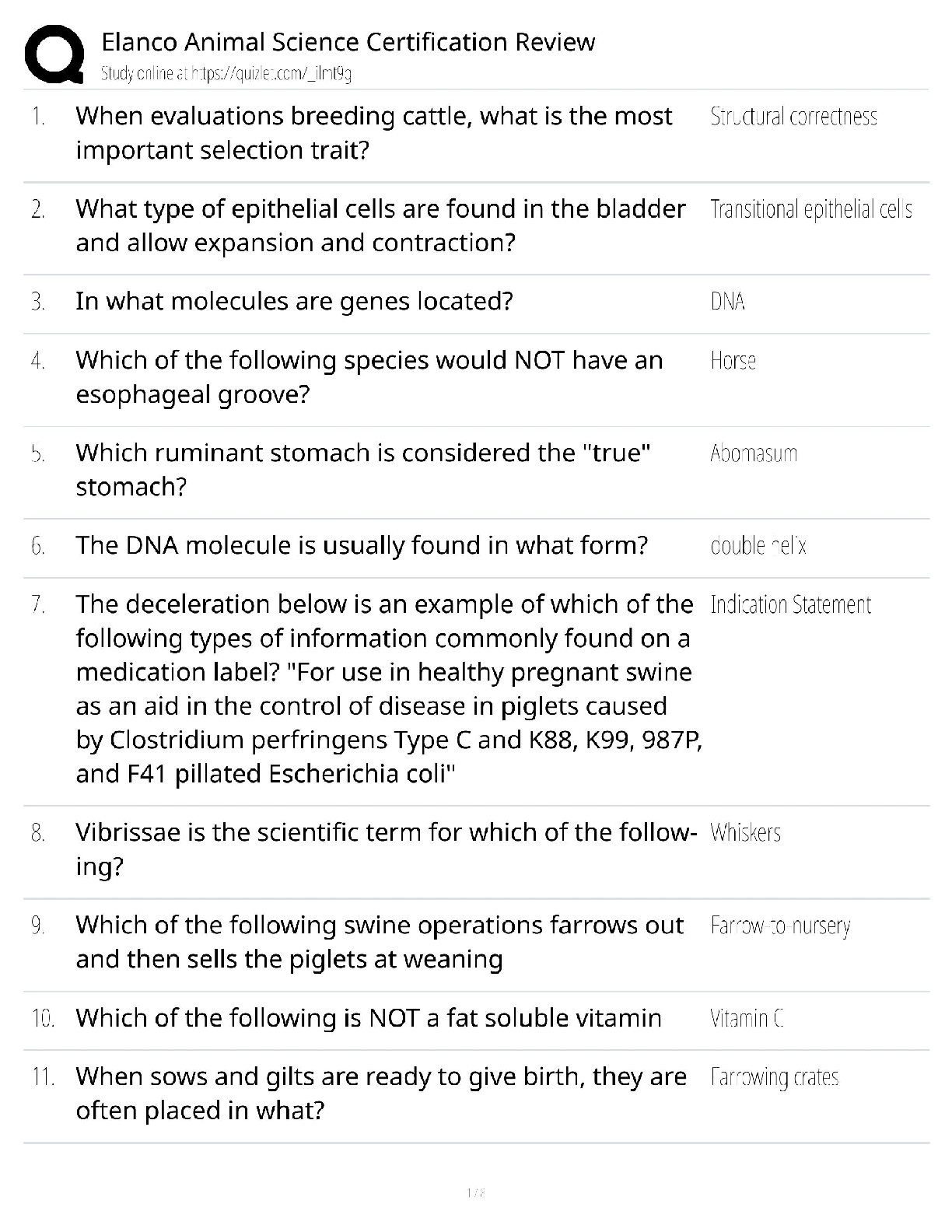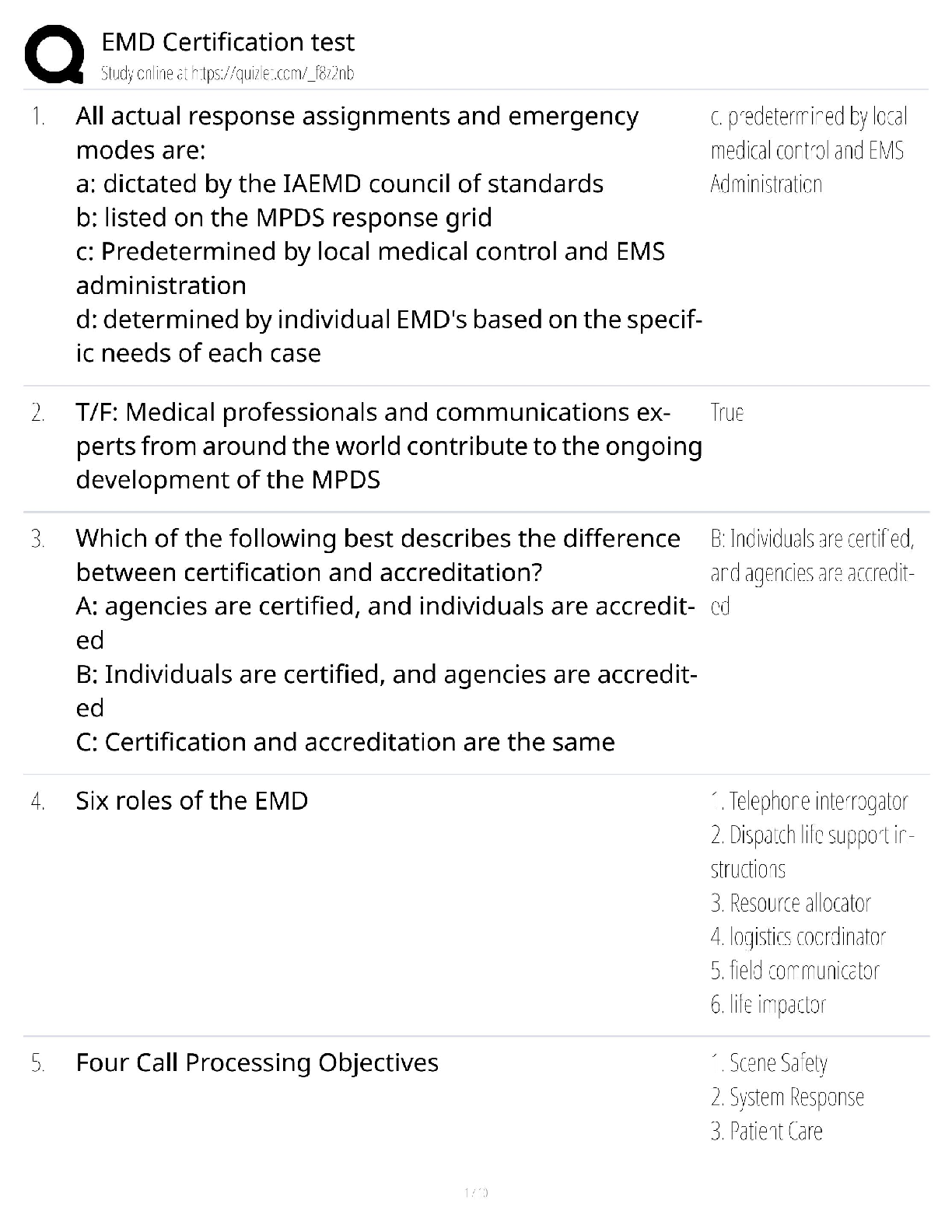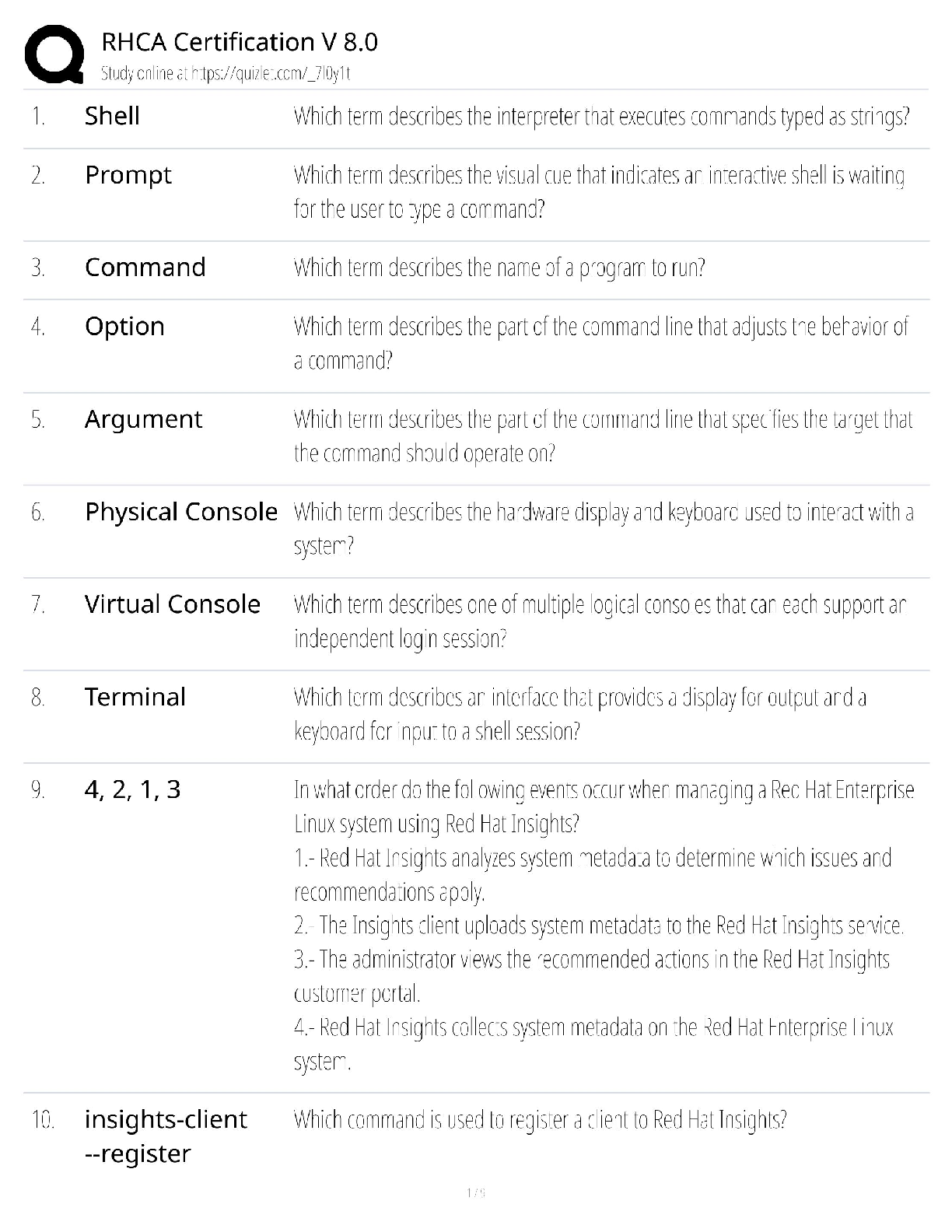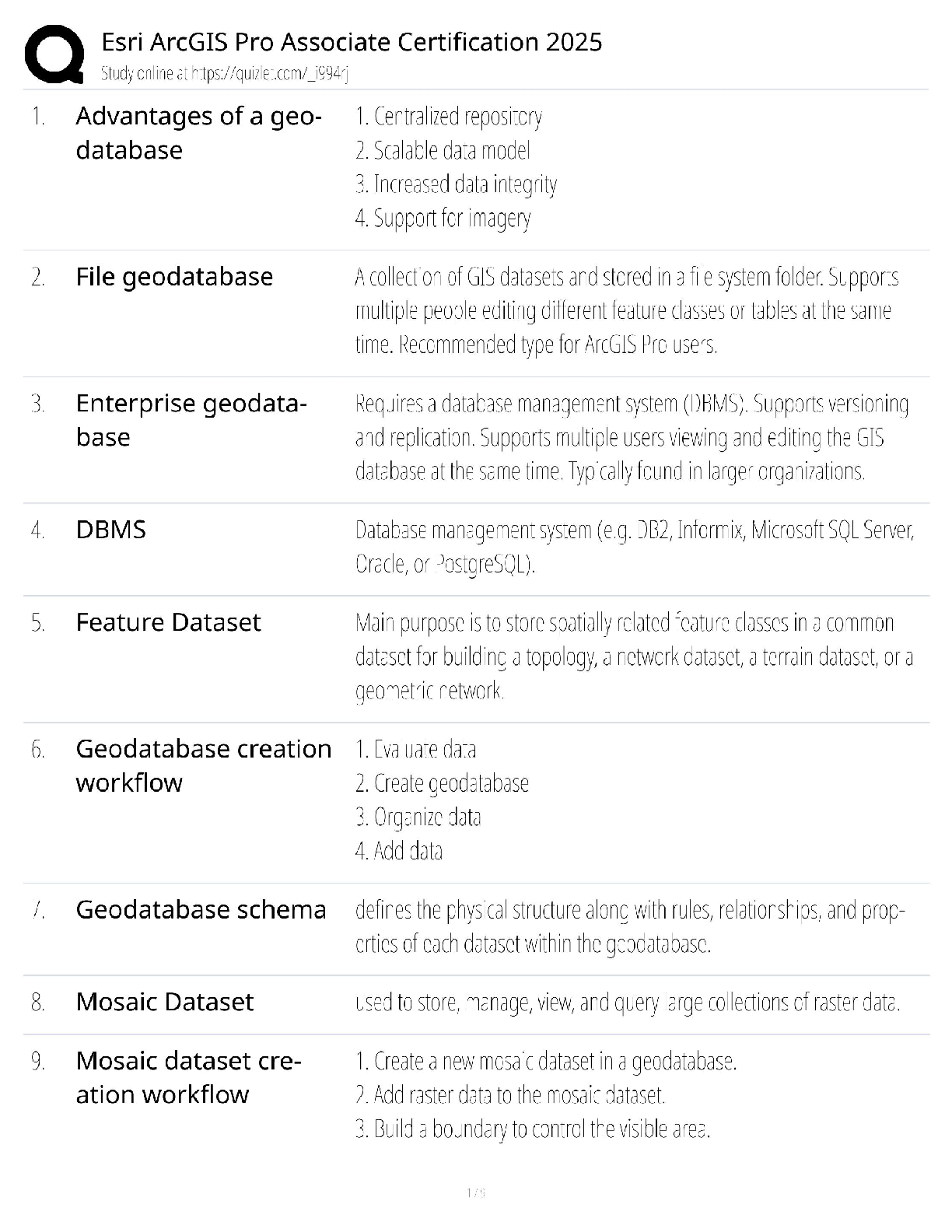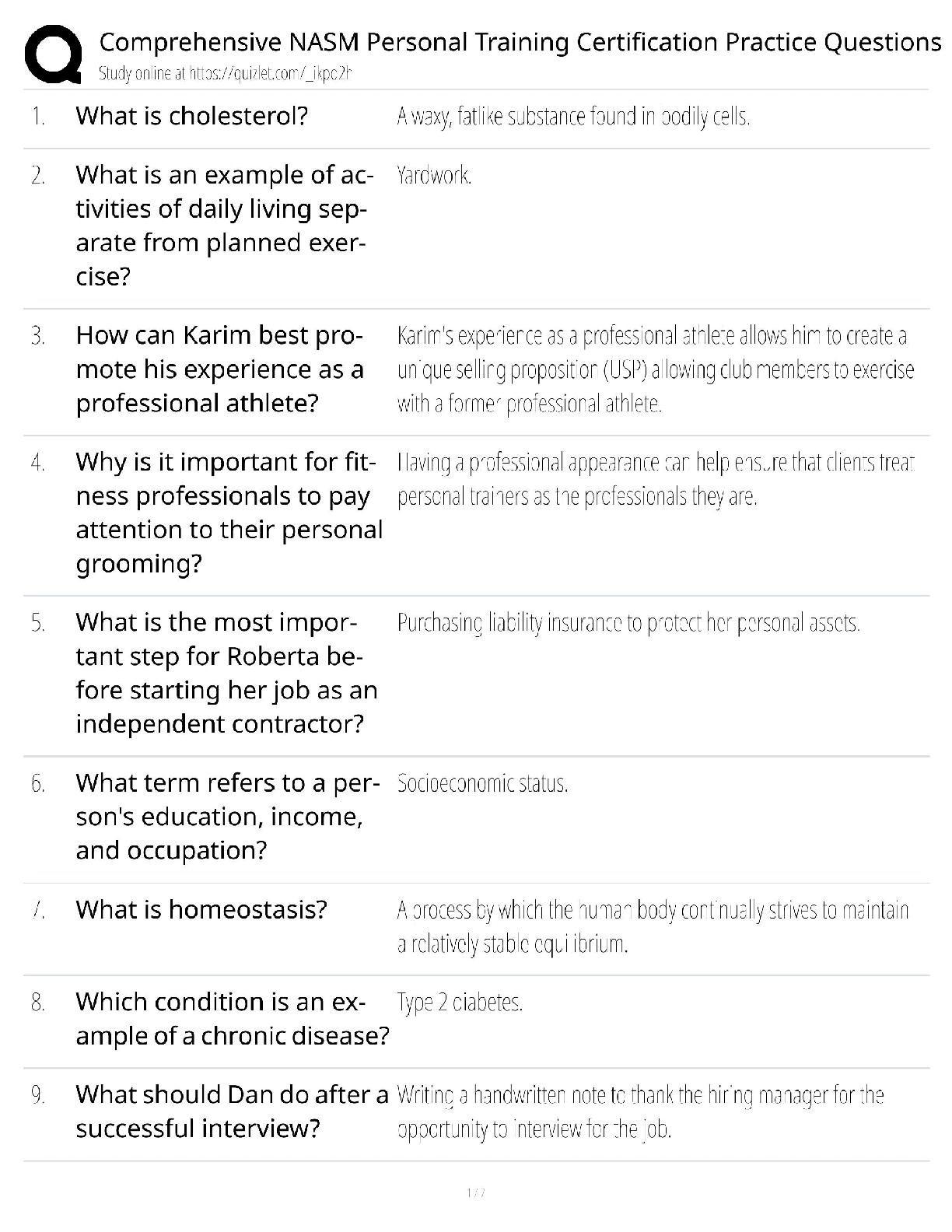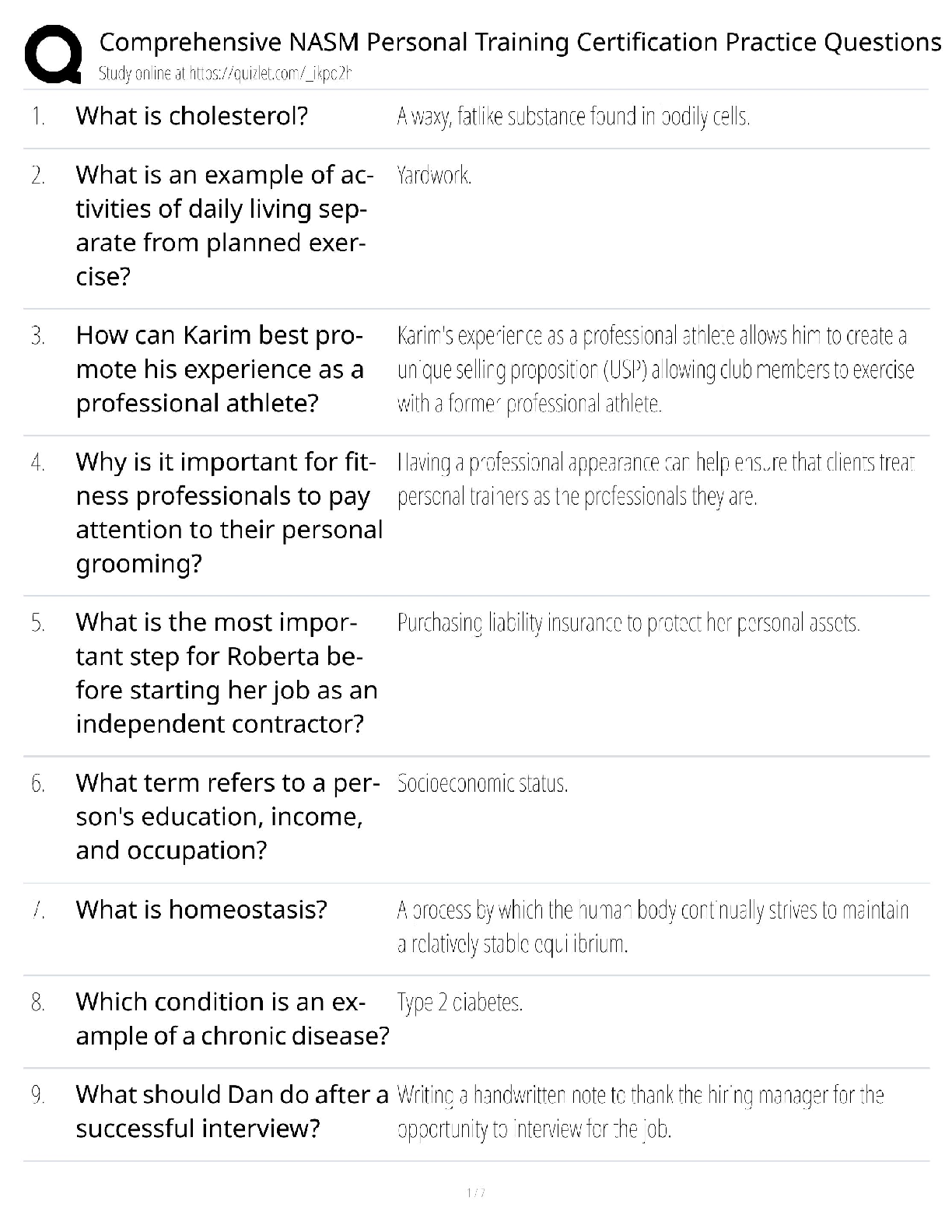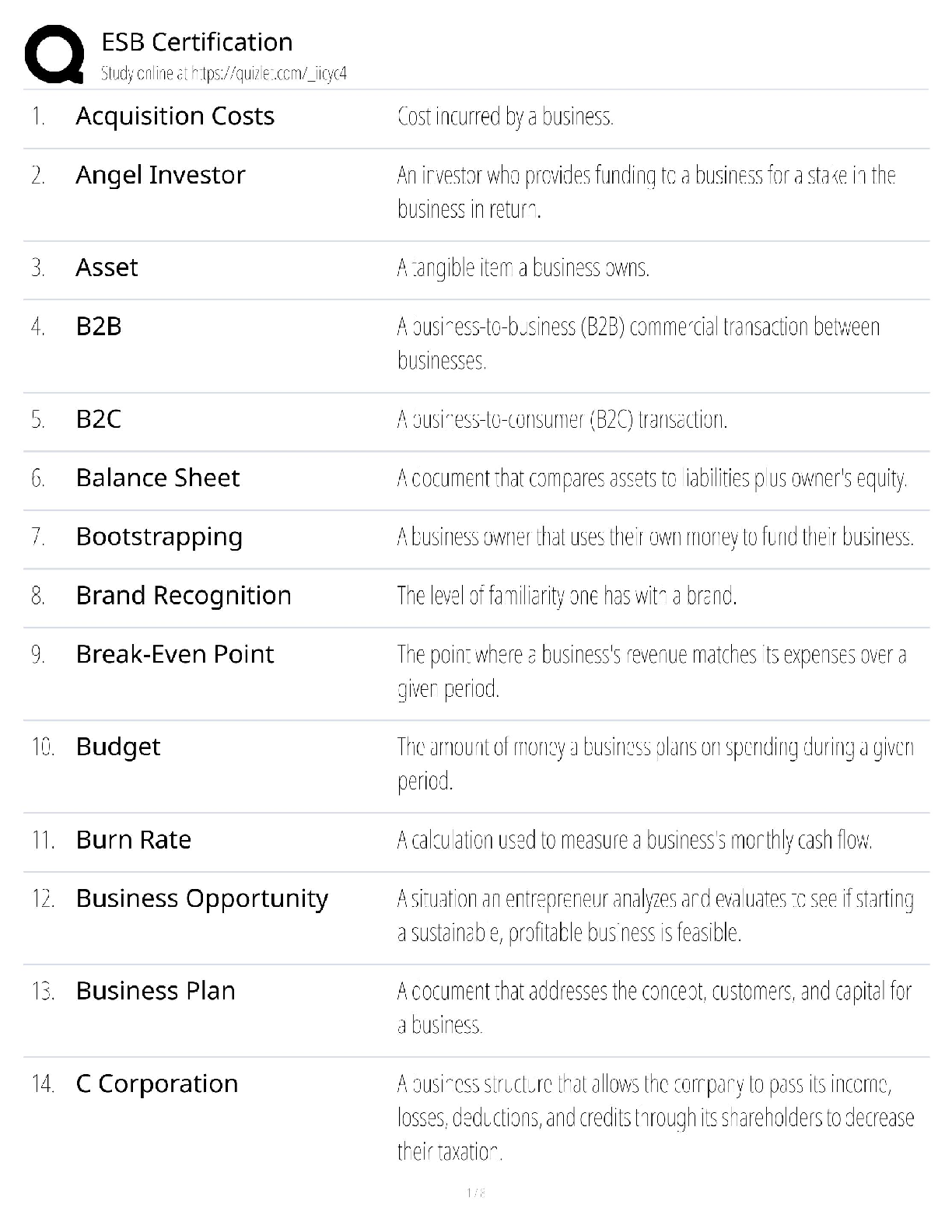*NURSING > QUESTIONS & ANSWERS > Lincoln Memorial University > NURSING 242 Chapter 6 (ALL CORRECT ANSWERS WITH RATIONALE) (All)
Lincoln Memorial University > NURSING 242 Chapter 6 (ALL CORRECT ANSWERS WITH RATIONALE)
Document Content and Description Below
NURSING 242 Chapter 6 1. A 35-year-old archaeologist comes to your office (located in Phoenix, Arizona) for a regular skin check-up. She has just returned from her annual dig site in Greece. She ha ... s fair skin and reddish-blonde hair. She has a family history of melanoma. She has many freckles scattered across her skin. From this description, which of the following is not a risk factor for melanoma in this patient? A) Age B) Hair color C) Actinic lentigines D) Heavy sun exposure 2. You are speaking to an 8th grade class about health prevention and are preparing to discuss the ABCDEs of melanoma. Which of the following descriptions correctly defines the ABCDEs? A) A = actinic; B = basal cell; C = color changes, especially blue; D = diameter >6 mm; E = evolution B) A = asymmetry; B = irregular borders; C = color changes, especially blue; D = diameter >6 mm; E = evolution C) A = actinic; B = irregular borders; C = keratoses; D = dystrophic nails; E = evolution D) A = asymmetry; B = regular borders; C = color changes, especially orange; D = diameter >6 mm; E = evolution 3. You are beginning the examination of the skin on a 25-year-old teacher. You have previously elicited that she came to the office for evaluation of fatigue, weight gain, and hair loss. You strongly suspect that she has hypothyroidism. What is the expected moisture and texture of the skin of a patient with hypothyroidism? A) Moist and smooth B) Moist and rough C) Dry and smooth D) Dry and rough 4. A 28-year-old patient comes to the office for evaluation of a rash. At first there was only one large patch, but then more lesions erupted suddenly on the back and torso; the lesions itch. On physical examination, you note that the pattern of eruption is like a Christmas tree and that there are a variety of erythematous papules and macules on the cleavage lines of the back. Based on this description, what is the most likely diagnosis? A) Pityriasis rosea B) Tinea versicolor C) Psoriasis D) Atopic eczema 5. A 19-year-old construction worker presents for evaluation of a rash. He notes that it started on his back with a multitude of spots and is also on his arms, chest, and neck. It itches a lot. He does sweat more than before because being outdoors is part of his job. On physical examination, you note dark tan patches with a reddish cast that has sharp borders and fine scales, scattered more prominently around the upper back, chest, neck, and upper arms as well as under the arms. Based on this description, what is your most likely diagnosis? A) Pityriasis rosea B) Tinea versicolor C) Psoriasis D) Atopic eczema 6. A 68-year-old retired farmer comes to your office for evaluation of a skin lesion. On the right temporal area of the forehead, you see a flattened papule the same color as his skin, covered by a dry scale that is round and feels hard. He has several more of these scattered on the forehead, arms, and legs. Based on this description, what is your most likely diagnosis? A) Actinic keratosis B) Seborrheic keratosis C) Basal cell carcinoma D) Squamous cell carcinoma 7. A 58-year-old gardener comes to your office for evaluation of a new lesion on her upper chest. The lesion appears to be “stuck on” and is oval, brown, and slightly elevated with a flat surface. It has a rough, wartlike texture on palpation. Based on this description, what is your most likely diagnosis? A) Actinic keratosis B) Seborrheic keratosis C) Basal cell carcinoma D) Squamous cell carcinoma 8. A 72-year-old teacher comes to a skilled nursing facility for rehabilitation after being in the hospital for 6 weeks. She was treated for sepsis and respiratory failure and had to be on the ventilator for 3 weeks. You are completing your initial assessment and are evaluating her skin condition. On her sacrum there is full-thickness skin loss that is 5 cm in diameter, with damage to the subcutaneous tissue. The underlying muscle is not affected. You diagnose this as a pressure ulcer. What is the stage of this ulcer? A) Stage 1 B) Stage 2 C) Stage 3 D) Stage 4 9. An 8-year-old girl comes with her mother for evaluation of hair loss. She denies pulling or twisting her hair, and her mother has not noted this behavior at all. She does not put her hair in braids. On physical examination, you note a clearly demarcated, round patch of hair loss without visible scaling or inflammation. There are no hair shafts visible. Based on this description, what is your most likely diagnosis? A) Alopecia areata B) Trichotillomania C) Tinea capitis D) Traction alopecia 10. A mother brings her 11 month old to you because her mother-in-law and others have told her that her baby is jaundiced. She is eating and growing well and performing the developmental milestones she should for her age. On examination you indeed notice a yellow tone to her skin from head to toe. Her sclerae are white. To which area should your next questions be related? A) Diet B) Family history of liver diseases C) Family history of blood diseases D) Ethnicity of the child 11. A new mother is concerned that her child occasionally “turns blue.” On further questioning, she mentions that this is at her hands and feet. She does not remember the child's lips turning blue. She is otherwise eating and growing well. What would you do now? A) Reassure her that this is normal B) Obtain an echocardiogram to check for structural heart disease and consult cardiology C) Admit the child to the hospital for further observation D) Question the validity of her story 12. You are examining an unconscious patient from another region and notice Beau's lines, a transverse groove across all of her nails, about 1 cm from the proximal nail fold. What would you do next? A) Conclude this is caused by a cultural practice. B) Conclude this finding is most likely secondary to trauma. C) Look for information from family and records regarding any problems which occurred 3 months ago. D) Ask about dietary intake. 13. Dakota is a 14-year-old boy who just noticed a rash at his ankles. There is no history of exposure to ill people or other agents in the environment. He has a slight fever in the office. The rash consists of small, bright red marks. When they are pressed, the red color remains. What should you do? A) Prescribe a steroid cream to decrease inflammation. B) Consider admitting the patient to the hospital. C) Reassure the parents and the patient that this should resolve within a week. D) Tell him not to scratch them, and follow up in 3 days. 14. Mrs. Hill is a 28-year-old African-American with a history of SLE (systemic lupus erythematosus). She has noticed a raised, dark red rash on her legs. When you press on the rash, it doesn't blanch. What would you tell her regarding her rash? A) It is likely to be related to her lupus. B) It is likely to be related to an exposure to a chemical. C) It is likely to be related to an allergic reaction. D) It should not cause any problems. 15. Jacob, a 33-year-old construction worker, complains of a “lump on his back” over his scapula. It has been there for about a year and is getting larger. He says his wife has been able to squeeze out a cheesy-textured substance on occasion. He worries this may be cancer. When gently pinched from the side, a prominent dimple forms in the middle of the mass. What is most likely? A) An enlarged lymph node B) A sebaceous cyst C) An actinic keratosis D) A malignant lesion 16. A young man comes to you with an extremely pruritic rash over his knees and elbows which has come and gone for several years. It seems to be worse in the winter and improves with some sun exposure. On examination, you notice scabbing and crusting with some silvery scale, and you are observant enough to notice small “pits” in his nails. What would account for these findings? A) Eczema B) Pityriasis rosea C) Psoriasis D) Tinea infection 17. Mrs. Anderson presents with an itchy rash which is raised and appears and disappears in various locations. Each lesion lasts for many minutes. What most likely accounts for this rash? A) Insect bites B) Urticaria, or hives C) Psoriasis D) Purpura 18. Ms. Whiting is a 68 year old who comes in for her usual follow-up visit. You notice a few flat red and purple lesions, about 6 centimeters in diameter, on the ulnar aspect of her forearms but nowhere else. She doesn't mention them. They are tender when you examine them. What should you do? A) Conclude that these are lesions she has had for a long time. B) Wait for her to mention them before asking further questions. C) Ask how she acquired them. D) Conduct the visit as usual for the patient. 19. A middle-aged man comes in because he has noticed multiple small, blood-red, raised lesions over his anterior chest and abdomen for the past several months. They are not painful and he has not noted any bleeding or bruising. He is concerned this may be consistent with a dangerous condition. What should you do? A) Reassure him that there is nothing to worry about. B) Do laboratory work to check for platelet problems. C) Obtain an extensive history regarding blood problems and bleeding disorders. D) Do a skin biopsy in the office. [Show More]
Last updated: 3 years ago
Preview 1 out of 10 pages

Buy this document to get the full access instantly
Instant Download Access after purchase
Buy NowInstant download
We Accept:

Reviews( 0 )
$8.00
Can't find what you want? Try our AI powered Search
Document information
Connected school, study & course
About the document
Uploaded On
Apr 19, 2020
Number of pages
10
Written in
All
Additional information
This document has been written for:
Uploaded
Apr 19, 2020
Downloads
0
Views
143

